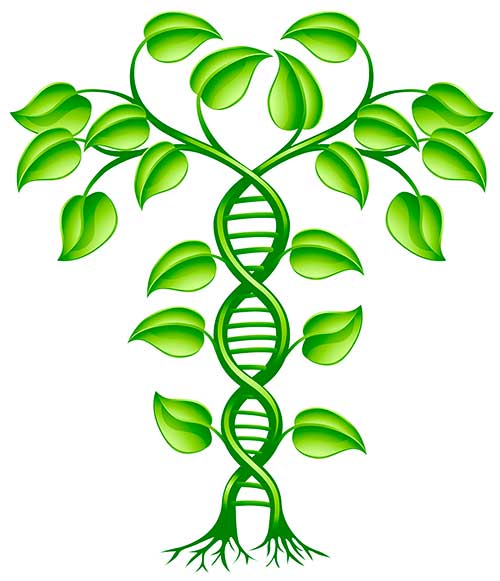See also
- Artificial insemination
- Breed of bees
- Breed's of cows
- Breeds of pigs
- Calving cows. How to prepare for calving. Receiving calf
- Dairy breeds of cows and bulls. The productivity of dairy cattle
- Duroc
- Estimation of bulls on quality of posterity
- Hereford cattle
- Holstein breed
- Landrace - bacon pigs
- Limousin cattle breed
- Marble beef
- Mastitis in cows
- Meat breed of sheep, their characteristics and photo
- Meat breeds of cows and bulls. The productivity of beef cattle
- Simmental breed of cattle
- The Aberdeen-Angus cows. Description and characteristics of the breed
- The farrowing of pigs: preparing for farrowing, farrowing, care of a pig and piglets after farrowing
- The Yorkshire breed of pigs
- Vietnamese pigs. Description of the breed, breeding, maintenance and care
- What is the difference netel from heifers or cows?
- What is the meat yield in pigs — a mechanism to define and calculate deadweight
- Zootechnical rules
It's interesting
Estimation of bulls on quality of posterity
Knowledge of the pedigree of the animal makes it possible to make only approximate judgments about its breeding value, therefore, the assessment of inheritance in the pedigree is only a preliminary and imperfect. A more reliable method of knowledge of heredity and breeding value of the animal is the analysis of his progeny, or evaluation of the progeny, as in this case, the immediate criterion of breeding value of an animal is the result of his breeding quality offspring, i.e., which are intended breeding animals.

As the proportion of males in the breeding business is much higher females (produces more offspring), in the zootechnical practice usually resort to assessing the progeny of male-producers. In breeding the best will be the manufacturer that gives the best offspring. This does not deny the importance of females and the need to assess the offspring and breeding stock, especially in such prolific animals like poultry, pigs, rabbits, partly sheep, etc.
Objective evaluation of manufacturers for the offspring is to identify manufacturers, the most valuable in the breeding relation, capable of mating with specially selected females to produce offspring of desired qualities.
For a correct assessment of producers for offspring must meet a number of methodological requirements.
In this evaluation it is necessary to draw a conclusion on the tribal virtues of the manufacturer on the properties derived from it progeny. But the properties of the descendants are dependent not only from the influence of heredity of the father, but to the same extent and on the influence of heredity of the mother. Moreover, the properties of the descendants, in addition to the reproductive cells, is also influenced by the mother's body, since we are talking about mammals, uterine development which is proceeding in close and inseparable connection with the body of the mother. Finally, we should not forget that on the properties of the offspring affects not only the heredity of both parents, but also the conditions of the environment in which the development of this offspring.
Very important in assessing the manufacturer's offspring have a masterbatch composition, from the mating of which the manufacturer gives offspring. One of the essential prerequisites for the proper evaluation of the manufacturer's progeny is therefore to account for the influence of mothers on the quality of the offspring. On the question of what Queens should pair the manufacturer to estimate his offspring were more reliable, it is necessary to respond: the correct way is to evaluate the manufacturer's progeny derived from these females, that in the future it is assumed the breeding use of this manufacturer.
A great help when deciding which females to evaluate the manufacturer, have knowledge of pedigrees and the analysis of methods of selection used in the farm. It may be that the father of the young appreciate the manufacturer has already shown good results with certain groups of females or with defined lines. Then it is advisable assessment of the manufacturer towards the females from mating with which it is expected a better seed.
Another condition affecting the reliability of the assessment of the manufacturer's offspring, is the age pairing of parents. It is known that the quality of the offspring largely depends on the age of the manufacturer and the age selected for mating Queens with him. Young producer transmits its qualities to the offspring is worse than in the period of full development.
An important factor that has a significant impact on the results of the evaluation of the manufacturer's offspring are the conditions for the development of comparable groups of animals. Needless to say, the comparison of offspring estimated manufacturer with those of other groups of animals should be in comparable economic conditions.

It is impossible to compare the productivity of progeny from the same age, with calves or the whole herd, obtained in a different age. Given the age variability of productivity, it is necessary to compare even-aged groups or, using the correction factor, to bring it (the productivity) for all animals to the same age. Similarly, wrong to compare the two groups in sharply different growing conditions, feeding, housing, etc. Below the indicators of the comparison groups was comparable, it is necessary to create for them the most favorable conditions and avoid amendments, bearing in mind that all sorts of amendments are often distorting reality. It is better to completely exclude from the processing of such animals which require a large number of amendments, particularly amendments to various conditions of feeding, for abnormal lactation, etc.
Even such seemingly accepted the amendment as age, distort the actual characteristics of the animal, considering the method of getting the correction factors. Upon receipt of empirical correction factors by comparing, for example, productivity of different age groups completely ignored the fact that until older ages remain in the result of the selection, not all animals, but only the best, and therefore, calculated in this way, the correction factors are a bit exaggerated.
Estimating animal quality of his progeny, we cannot limit ourselves in describing this offspring of the individual, although important, features. It is necessary to evaluate the animal as a whole, with all its features. Often take into account only the productivity and partly the quality of the products. This unilateral approach is wrong, since animal breeding requires not only the ability to transmit to their offspring the high productivity, but also sufficient vitality, its constitutional strength, endurance, resistance to adverse external influences and resistance to diseases, high fecundity, etc.
Therefore, when evaluating manufacturers for the offspring it is necessary the analysis of the offspring conducted on the entire complex of biological and economically useful traits tailored to the specific conditions in which animals are bred. This comprehensive assessment is the only correct one and ensuring the success of the case. The chase for some separate "breeding" traits, clothed upon complex mathematical ratios and formulas, nothing practically useful does not.
No less important factor is the consideration of all the offspring derived from evaluate producers, and not one of his best parts, as is sometimes done. The exception of the worst part of the offspring, as well as births stillborn may lead to false conclusions and re-evaluation of the manufacturer.
Describing the offspring of any manufacturer, we cannot limit ourselves to the average performance of the whole group of descendants; required individual analysis of each pairing. It is important to compare not only the average value but to consider the results of individual matings. It may be that the manufacturer has estimated the average figures are low, but these averages hide the cases when from mating with certain groups or individual Queens is an exceptionally valuable offspring. Absolutely natural and practically rational to use such manufacturer on those females with whom he gives the most successful combinations.

Finally, significant in the evaluation of vendors is the question of the number of descendants of different breeds of cattle, pigs and other livestock needed for more or less reliable judgments about the breeding value of the manufacturer. Due to the fact that no manufacturer gives a completely homogeneous offspring, to judge his inheritance for the one or two descendants is difficult.
Some authors on the basis of pure mathematical calculations required a huge number of descendants (at least 200) for a correct assessment of the manufacturer. These requirements, however, are not viable.
A number of studies and especially the works of academician M. F. Ivanov show that under favorable conditions of feeding, care and maintenance of virtually reliable assessment of the manufacturer can be done for 30-40 descendants.
In practical terms, especially for first orientation, we should not abandon assessment of the manufacturer and on the smaller number of descendants. Sometimes figures 6-10 of the descendants is possible with sufficient degree of confidence to make a preliminary conclusion about the merits of breeding the manufacturer. Assessment should not be performed on the average values resulting offspring, and according to the analysis of each individual pairing in the light of all the circumstances in which the manufacturer is assessed.
Valuable guidance on the assessment of the manufacturers given in the works by M. F. Ivanov in sheep. The most important condition for a correct assessment of the manufacturer on offspring M. F. Ivanov thought of raising animals in the most favourable conditions of feeding, care and maintenance. Of great importance in the evaluation of the offspring he gave to the Constitution of animals and the assessment of the whole organism in connection with environmental conditions and the target installation, and not separate isolated grounds. An important condition for correct evaluation of M. F. Ivanov felt a profound knowledge of the breed different types within the breed, their compatibility and the requirements of animals of different types to the conditions of existence.
So, the main prerequisites for a correct assessment of the manufacturer's offspring are:
- the correct selection and the influence of mothers obtained from the manufacturer offspring, which is a judgment about the merits of a tribal manufacturer;
- to account for the influence on the quality of offspring age of parent;
- clarification of the requirements resulting offspring to the conditions of life aimed at growing it and the light of all the circumstances in which develop and produce animals in which it is concluded that the breeding value of the producer;
- comprehensive assessment of the progeny with regard to all its biological and economic qualities and not only on individual characteristics and key figures;
- the consideration of all the progeny assessed the manufacturer, and not a separate part, accidental or a conscious choice which can distort the true characteristics of the breeding qualities of the producer;
- individual analysis results from each mating, not only the calculation of average indicators;
- a sufficient number of estimated descendants of the manufacturer to ensure the reliability of the assessment.
Evaluation of the manufacturer largely also depend on how the groups of animals to compare the offspring appreciate the manufacturer.
All existing methods of evaluating the manufacturer's offspring can be divided into two groups:
- methods, consisting in the comparison of the properties of the descendants, with the properties of their mothers;
- methods that are compared between the descendants of different manufacturers.
The first group includes the method of "Brightener only-wholecell" in which the properties of the descendants of the estimate of the manufacturer are compared with the properties of their mothers. If children appreciate the manufacturer surpass their mothers, the manufacturer is recognized after improver; if they are below the mothers, the manufacturer is entered into the category of uhudshatsa.
The main disadvantage of this method is ignoring the quality of the pairing with the test producer of breeding stock and mixing the entire evaluation to find the difference only in the quantitative indicators of mothers and daughters without their quality characteristics.

It is obvious that the results of the assessment of the manufacturer, i.e. quality of his progeny, which is caused not only by heredity, but the quality and pairing him with females.
Thus, in practice there is no absolute improvers and absolute uhudshatsa. Manufacturer, appeared neutral or even wholeteam in the same herd, it may be the Brightener only in the other.
Not less significant disadvantage of the comparison of daughters with mothers indicators is the heterogeneity of conditions in which they were grown and had produced comparable groups differing in their age and hence the need to introduce amendments to the age, heterogeneous conditions, etc., which is highly undesirable.
In assessing manufacturers on the offspring by comparing children with their mothers for the convenience of comparison of indicators of children and mothers and for a more detailed analysis of the results of each mating, it is advisable to use the ordinary correlation of the lattice.
Using the correlation lattice, it is possible to produce a comprehensive assessment of the manufacturer on a number of indicators:
- type of animal
- his physique
- milk yield
- General development
- live weight, etc.
The correlation grating can be used to evaluate manufacturers on offspring and other animal species and enables it by any properties of animals. But here, as in all other cases, which compared the daughters with their mothers, it is necessary to consider the heterogeneity of the condition, which developed and produced the mother and daughter. The second group of estimation methods animals the offspring is the method of comparing the progeny of the manufacturer with their peers from other manufacturers. This method compares the offspring of the evaluated producer with peers, born and grown in the same farm.
In this method there is no need to introduce correction factors as age and economic conditions, as the offspring of the manufacturer and compare them with peer groups has grown and developed in the same, similar, conditions, and their productivity and other assessed characteristics belong to the same age. This method is from this point of view, more perfect, but only possible in relatively large farms, where there is sufficient to compare the number of peers and receiving the necessary number of descendants of the estimated producer in one economy do not pose difficulties.
Comparison and selection of manufacturers for the quality of the resulting progeny can be carried out accurately only with the condition that if the offspring compare manufacturers received from well-chosen ewes, as well as developed and produced in comparable conditions of feeding, care and maintenance.
But in this case, it is often ignored different combination of individual pairs and a special selection of ewes to specific manufacturers, i.e. basic, which is the essence of breeding. Most appropriate this method can be in assessing the merits of meat (and prematurely) in cattle, pigs and sheep, as also in the case when the economy re-organized, stocked with animals of unknown origin and productivity, and the primary livestock keeping and breeding records only are entered.

You can finally use the comparison of the offspring of the subject company with the average indicators in the herd. However, in this method, the introduction of a minimum number of amendments is inevitable. Raznovozrastnykh the composition of herds of any economy is the need of adjustments for age. And conditions of business, as if they are homogeneous for the different animals born in different years may not be similar.
Nevertheless a comparison of the descendants of the manufacturer to the average performance of the herd is known and can characterize the actual improvement or deterioration of the herd.
Each of the above methods of evaluating the manufacturer's offspring has positive and negative sides. We must remember that the rating of any manufacturer by any method is always conditional, relative and not absolute. Breeding value as all other properties of the manufacturer, changes with age, the best animals produce offspring in middle age, in the age of prosperity, and the very young and very old, give relatively the worst offspring. This age-related variability of breeding qualities should not be forgotten when evaluating manufacturers for the offspring. It must be remembered that the animals that received a certain age, and in combinations of Queens ratings, you can get a completely different rating and have quite different breeding value in a different age, in different circumstances, in different combinations with the masterbatch composition.
Moreover, the various quality of offspring, and hence different assessment will have the same manufacturer under different physiological condition in the breeding period.
Under different circumstances may be suitable different measurement manufacturers the progeny. The question of the desirability and possibility of use of one or other of them must be decided in each case in the light of all the circumstances and conditions of the economy.
Evaluation of bulls on progeny as the most reliable method of recognition of their breeding values, should be closely linked to the analysis of the origin of the evaluated manufacturers. Knowledge of the pedigree and quality indicators of ancestors of the manufacturer gives the option to pre-select the best manufacturers and to make a more informed selection of them breeding stock for a more appropriate subsequent evaluation of the progeny. Pedigree along with average offspring gives a more complete and deeper characterization of the breeding qualities of the manufacturer.
Except given the pedigree (direct ancestors) and the quality of offspring, when evaluating the animals should not be neglected and given the relationship on the sideline. Of a manufacturer of high-value sisters, nieces, brothers, give good offspring and etc., also increases the confidence that we are interested in manufacturer is good; therefore, the relatives on the lateral line measured on the pedigree and quality of progeny increases the accuracy of evaluation of animals.
Such an assessment given the pedigree and all the relatives on the lateral line is particularly necessary when the manufacturer has assessed the small number of descendants, hindering the ability to draw some conclusions about its breeding qualities.
But regardless of this, complement the progeny evaluation method of genealogical analysis is very important, because the evaluation only on the offspring, without regard to family ties, good and bad combinations and estimation only through the lineage, may not give reliable indications for future breeding use of the manufacturer. The knowledge may complete genealogy with a detailed description of all the families but direct and lateral lines gives the possibility to install, in what combinations and under what method of selection estimated manufacturer can be best utilized in future breeding work.
To evaluate the progeny can be not only males, but females, especially in such prolific animals like pigs, rabbits, sheep, poultry.
A comprehensive assessment, based on knowledge of individual peculiarities of the animal (conformation, Constitution, productivity and other individual properties) and its relationship with the external environment, supplemented by the assessment of origin and quality of offspring, ensures the correct selection of breeding animals, and hence the success of breeding.
In the selection process according to individual qualities in the evaluation of animals in the pedigree, particularly the offspring of a careful study of methods of selection that were used in obtaining one or the other of the animal, in comparison with the properties obtained of the animal (with his character build, productivity, etc.) gives you the opportunity to find the most successful combinations of separate groups of animals, individual lines and tells the way one should conduct breeding work on to deliver the desired results.
Evaluation and selection of animals for breeding during their lives are made repeatedly. For the first time evaluated and selected (for the development of the Constitution and origin) the best animals in the herd maintenance at the age of: foals 6-8 months, calves 5-6 months, lambs 3 to 4 months and piglets 2 months. If this is left to repair a few more animals than required for the annual replacement of rejected to have the possibility to choose for repair the best. Secondary assessment of the animal (according to the Constitution, and productivity) is made as adults. In subsequent years, when will the resulting offspring, the animals are evaluated and the offspring. Evaluation of the origin, Constitution, live weight, productivity and the quality of offspring produced separately, and then on the basis of all indicators is given an overall score, and the animal belongs to a particular class. Proficiency is the total measure of the value of the animal.
Evaluation and selection of breeding animals and breeding ends. Based on the analysis of methods of selection and results that were obtained in previous breeding work and evaluation of bulls by the progeny, and the ways of further breeding, the most promising combinations of individual groups of animals and individuals, breeding lines, etc. Rating of producers is an important link in the whole chain breeding work aimed at obtaining the desired shapes of animals and productivity.

